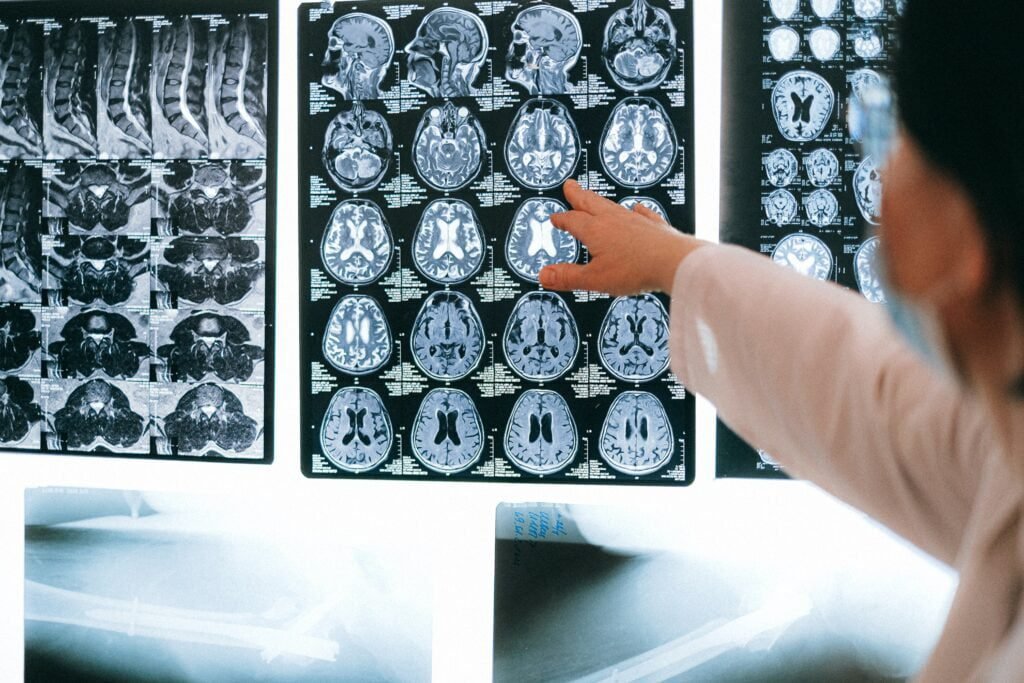What is Migraine?
Migraine is a neurological condition containing multiple symptoms and is associated with severe and extreme pain in your head. It is different from the normal headache that everybody experiences. Unlike normal headaches, migraines can be felt by strong pulsing and throbbing sensations.
According to the result of a survey, 1.41 million cases of migraine were seen in Spain in 2017
Source: Statista

Causes and Risk Factors
Following are the possible causes and risk factors of migraine:
- Changes in the levels of serotonin chemical
- Skipping meals
- Sex i.e. migraine is more prevalent in females than males
- It can be due to older age
- Traveling
- Changes in sleep pattern
- Usage of oral contraceptives
- Certain odor
- Foods like alcohol, caffeine
- Food additives like tyramine
- Smoking
Factors that Trigger Migraine
- Bright light
- Hormonal imbalance
- Increase barometric pressure
- Extremes in weathers
- Loud sounds
- Excessive stress
Diagnosis
Diagnosis of migraine is totally dependent upon the previous medical history, family history, types and severity of symptoms the person is having.
Confirmation Tests for Migraine
Following is the list of Tests for confirming whether the person is suffering from migraine or not:
- MRI
- CT Scan
- Abnormal brain anatomy test
- Test for detection of any tumor
- Test for stroke

Stages and Symptoms
It has many symptoms but it is not necessary for a person to have all the symptoms at the same time.
1. Prodrome stage
It is the pre-migraine phase that begins almost one day before migraine accompanied by the following symptoms:
- Depression
- Craving for foods
- Hyperactivity
- Dizziness
- Lethargy
- Bloating
- Constipation
- Stiffness of neck muscles and soft tissues
2. Attack Phase
This phase starts as soon as a person experiences migraine and last up to 4 hours to 72 hours with symptoms such as:
- Pulsing and throbbing pain
- Pain that affects one side or both sides of the head
- Pain exaggerating with certain lights, sounds, smells and touch
- Nervousness
- Depression
- Nausea and vomiting
Severity of Migraine Pain
The severity of the condition depends upon the factors listed below:
1. Intensity:
The signs and symptoms of migraine are different from the normal headache. The pain is often pulsating, irritating that may start mildly but becomes worse over time.

2. Frequency:
How frequently a person experiences it depends individually. Some people may have migraines twice a month while others on the extreme suffering from it all month long.
3. Areas suffering from pain:
The pain is mostly in the forehead i.e. anterior side of head, on either side or both sides of the head.

4. Time duration:
The pain of migraine usually remains up to 4 hours but it can extend to 72 hours or more and if left untreated can last up to a week as well.
Types of Migraine
There are two main types of migraine.
i. Migraine without Aura:
Most people do not suffer from migraines with an aura so it is also called common migraine. Its characteristics include:
- Unilateral pain
- Pain increases with movements
- Phonophobia
- Associated with any other underlying health issue
- Pain cannot be controlled without treatment and usually remains for 4 hours to 72 hours
reference: https://www.healthline.com/health/migraine#types
ii. Migraine with Aura:
It is also known as classic or hemiplegic migraine. It is rare and is more complicated than common migraine. only 25% of people are affected by this type of migraine worldwide.
The condition is associated with certain characteristic like:
- Difficulty in speech (dysarthria)
- Blurred vision
- Decreased sensory function
- Hyperacusis
- The weakness of one side of the body
Other types are:
- Menstrual migraine affecting 60% of the total women with migraine
Source: Healthline
- Abdominal migraine
- Ophthalmoplegic migraine
- Silent migraine
- Vestibular migraine
- Ophthalmic migraine
Treatment:
If you want to treat migraine you have to consider the following factors first, on which the treatment depends:
- Age of the patient
- Type of migraine
- Frequency of pain
- The intensity of the condition
- If the symptoms include nausea and vomiting
- Any underlying medical condition
The treatment methodologies include:
- Lifestyle modification i.e. managing stress and other symptoms that trigger migraine
- Hormonal therapy in case of menstrual migraine
- Medications such as NSAIDs or acetaminophen (Tylenol)
- Acupuncture/ Acupressure
- The surgical procedure approved by the U.S. FDA Food and Drug Administration

Self Care Remedies for Migraine
Some self-care remedies of home remedies for managing and reducing the symptoms are massaging your head, putting cold bags on your forehead and on your neck posteriorly, use peppermint oil for massage, try to avoid eating hot dogs, perform yoga, etc.
Migraine Versus Headache
Migraine is not that typical headache that is experienced by every person in the daily routine of life due to several reasons like hypertension, extreme works loads, stress, etc. Some inevitable traits of migraine that distinguish it from common headache are pre symptoms of migraine, the time duration of pain, nature of pain, etc.
Myths Regarding Migraine
Some of the myths and misconceptions associated with migraine that we hear often are:
- It does not last for long
- It is always accompanied by an aura
- It is not curable at all
- It cannot be due to a medical condition
- Many more
Conclusion:
Migraine is a serious medical and neurological symptom showing many symptoms. It can be due to running in genes or some other reason. The treatment varies from person to person and you cannot apply the same treatment methodology to every patient with migraine. Migraine is different from the typical headache and we should find out the effective treatment rather than believing myths created.







0 Comments